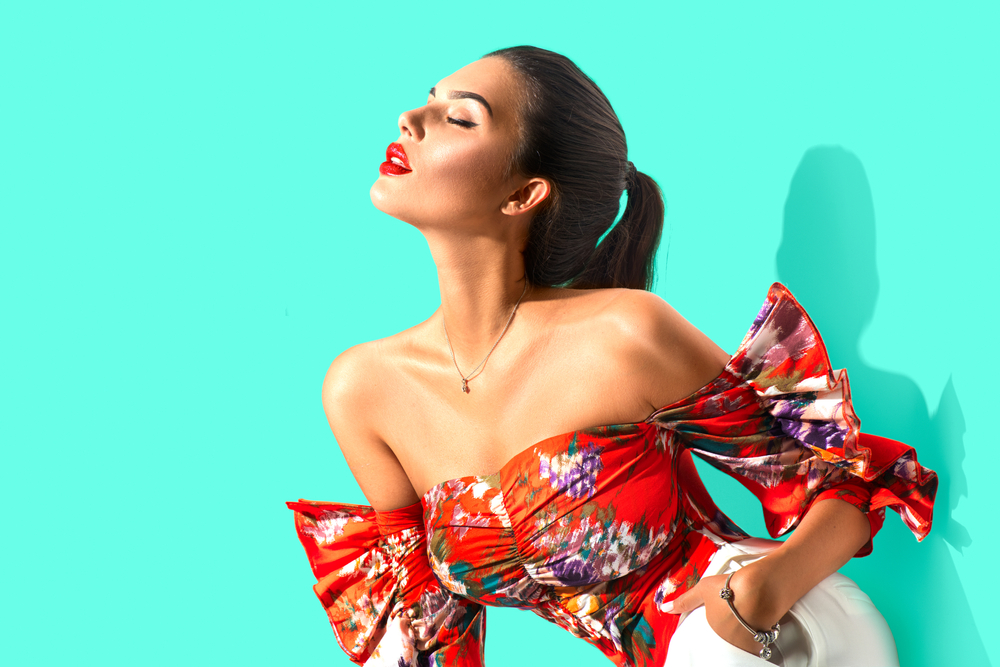
In today's visually-driven society, the art of modeling has gained significant prominence. Whether it's for fashion, product advertising, or artistic expression, models play a pivotal role in creating captivating visual content. But what goes on behind the scenes of a successful photoshoot? How do models bring life to still images? In this article, we will delve into the secrets behind successful photoshoots, uncovering the intricate art of modeling (or modelling) .
Understanding the Role of a Model
Models are more than just beautiful faces or attractive figures. They are skilled professionals who bring emotions, personality, and depth to a photograph. A great model has the ability to convey a story, capture attention, and make an impact. They collaborate closely with photographers, stylists, and designers to fulfill a shared vision.
When it comes to modelling , it's not just about striking a pose or looking pretty. Models need to be adaptable, able to embody different characters and styles. They must learn to convey emotions, whether it's happiness, sadness, or even mystery, using their body language, facial expressions, and gazes.
Preparing for a Photoshoot
Preparing for a photoshoot is more than just showing up on the day. Successful models understand the importance of thorough preparation, ensuring they are ready to bring their A-game to the set.
Physical preparation involves taking care of the body, maintaining a healthy lifestyle, and staying in shape. They exercise regularly, eat a balanced diet, and prioritize their mental and physical well-being. Skin care routines, hair treatments, and grooming are also essential elements of their preparation. Models understand that a well-prepared canvas enhances the overall outcome of the shoot.
Mental preparation is equally crucial. Models research and familiarize themselves with the brands they'll be representing or the concepts they'll be working with. They study poses, practice in front of a mirror, and experiment with different expressions. Models who are well-prepared build confidence, which translates beautifully into their performance during the shoot.
The Photographer-Model Relationship
The relationship between the photographer and model is at the core of a successful photoshoot. Collaboration and trust are key factors that contribute to the overall success of a shoot. A great photographer understands how to direct and guide the model to achieve the desired outcome.
Communication is vital, as both parties need to be on the same page. The photographer should clearly explain the concept, mood, and objectives of the shoot, while the model should express their ideas and concerns. By fostering open communication, the photographer can better guide the model, and the model can bring their own creativity to the table, enhancing the final result.
During the shoot, the photographer should provide constructive feedback, offer guidance on pose adjustments, and actively engage with the model. This collaborative energy creates a positive environment, where creativity can thrive, resulting in stunning photographs.
The Power of Confidence and Positivity
Confidence is an indispensable quality for a successful model. It radiates through the lens and captivates the viewer. Models need to trust their abilities, embrace their uniqueness, and remain positive throughout the shoot.
A positive mindset not only benefits the model but also impacts modeling the entire production team. Positivity boosts morale, encourages experimentation, and fosters a relaxed atmosphere. Models who modeling (by models) exude confidence and positivity build a strong reputation within the industry, attracting more opportunities and collaborations.
Frequently Asked Questions
1. How important is modeling experience?
While experience certainly helps, it's not the sole determinant of success. Many successful models have started without prior experience. It's more crucial to possess the right attitude, eagerness to learn, and a passion for the art of modeling.
2. Is height a requirement for modeling?
While certain types of modeling, such as runway, may have height restrictions, the industry has become more inclusive. Fashion campaigns, editorials, and commercial modeling now embrace diversity in terms of height, body types, and ethnicities.
3. How do models handle rejection?
Rejection is a common occurrence in the modeling industry. Successful models understand that it's not personal and view it as an opportunity to grow. They learn from feedback, refine their skills, and continue to pursue new opportunities.
4. Is modeling a viable career choice?
Modeling can indeed be a viable career choice. However, it requires dedication, hard work, and perseverance. Models must continuously network, market themselves, and build relationships within the industry to secure long-term success.
5. Are there age limitations in modeling?
modelling (or modeling) opportunities exist across various age groups. While the majority of models start their careers in their late teens or early twenties, there are opportunities for older models, especially in areas such as commercial or luxury fashion.
In conclusion, successful photoshoots rely on the artistry and skill of models. They bring life to still images, effectively conveying concepts and emotions. Through meticulous physical and mental preparation, collaboration with photographers, and an unwavering sense of confidence and positivity, models have the power to create breathtaking visuals that leave a lasting impact.
Other useful resources
- https://www.planetmodelphoto.com/models/modeling/usa/charlotte/nc-north-carolina
- https://www.planetmodelphoto.com/models/modeling/usa/wilmington/nc-north-carolina
- https://blog.planetmodelphoto.com/models/modeling/
- https://en.wikipedia.org/wiki/Category:Modeling_(profession)